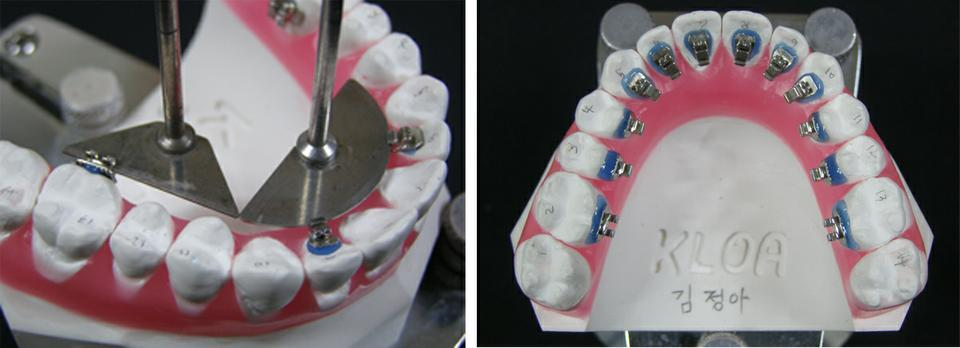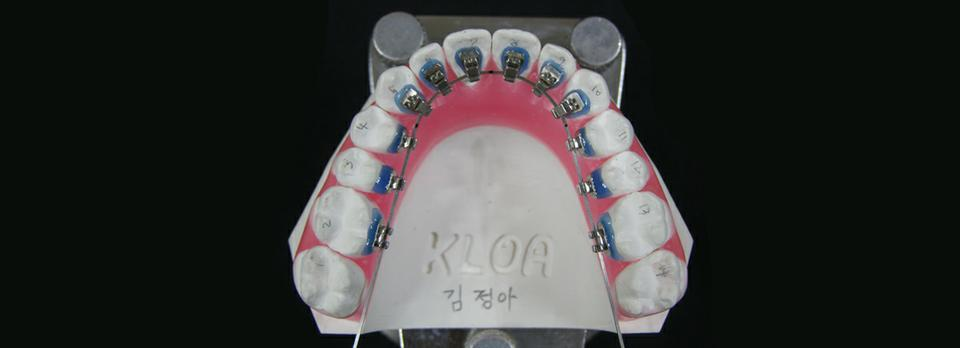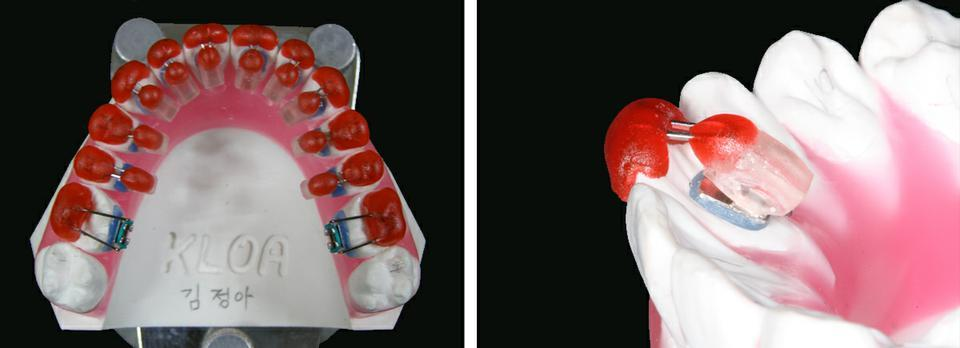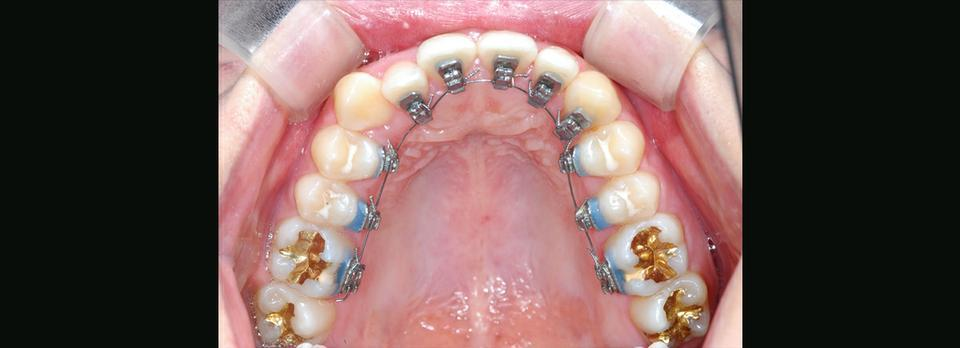Customization
The back side of a tooth is, unlike the front side, diverse and irregular, making access difficult for bonding braces by direct vision. For the purpose of bonding the brace to its exact position, the indirect bonding system is recommended in lingual orthodontics, in which customizing process of braces is included.
By customizing lingual bracket, deciding the size of preformed lingual straight archwire, and producing individual transfer tray, a CLIB (Customized Lingual Indirect Bonding) method1 complements the Anboini system.
1. Hong RK, Kim YH, and Park JY. A new customized lingual indirect bonding system. J Clin Orthod 2000;34:456-60.
Indirect Bonding Process
-
2. Brace customization
From the setup model, Anboini lingual bracket is customized for each tooth. Using the special bracket-placement equipment, the brackets are bonded to the ideal setup with a light-cured resin. The torque, in-out, and angulation of each bracket are customized, based on the unique prescription for each patient. Customized torque and in-out are built into resin on each bracket base.
-
3. Preformed straight archwire
From the setup, Anboini lingual bracket is customized for each tooth while simultaneously the size of lingual straight archwire is determined for each arch. In Anboini system, 3 types (small, medium, and large) of the preformed lingual straight archwire are prepared, and one of them is used for maxilla and/or mandible during treatment.
-
4. Individual transfer tray
Then, individual transfer tray is made directly from the setup model to transfer the brackets precisely and efficiently to the patient’s mouth. Compared to transfer tray for groups of adjacent teeth, individual transfer tray offers enhanced accuracy, capability of being applied to all cases, and reproducibility of the ideal position for each bracket.
Doctors
Contact Anboini Orthodontists
Subscribe To RSS
Click to subscribe to RSS for real time updates
http://anboini.com/product/latest/feeds/
You could add above URL in your favorite RSS reader
Page QR Code
About Us
For 25 years, we have used Fujita’s multi-slotted lingual brackets and its associated mushroom archwires, who is the originator of lingual orthodontics. By the change of the time, the concept of the straight archwire also came into request in lingual orthodontics, which could not keep up with the Fujita lingual bracket. ...more





